What is Braze Welding? How Does It Work? A Complete Guide
Last Updated on
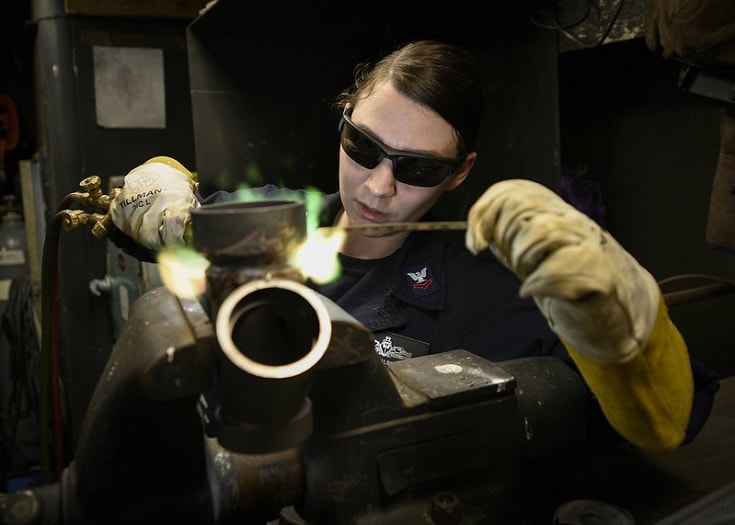
The process of braze welding is a variable of the MIG/MAG welding process. The majority of braze welding’s essential variables resemble those of the conventional MIG/MAG welding processes. However, the melting points of filler wires are different between the two welding processes. In braze welding, a continuously fed wire electrode is melted by an arc formed between the electrode and the workpiece. Since the temperature used is low, there will be no significant melting or fusion of the parent metal. The molten metal will only flow into the gap formed between the parts to be fused and solidifies upon wetting.
How Braze Welding Works
Among the major attributes of brazing is melted filler metal’s ability to flow in between the welded parts to produce a strong and leak proof connection. The effect of this process is known as capillary action, and it enables penetration between the two surfaces. Capillary action also makes it possible for welders to join pipes or tubes in the horizontal position despite gravity in the vertical position.
Procedure for Braze Welding
1. Determine the Joint Spacing
During the brazing process, the capillary action is responsible for drawing the filler metal into the joint. As such, you can only form strong joints if the space between the filler material and the base metal is wide enough to allow the force to work appropriately.
2. Plan for Expansion and Contraction
Before you begin brazing, choose the most appropriate clearance for the base metals. This helps in enhancing the performance of capillary action. Whenever you are tasked to weld two flat parts, always choose the lap joint to allow the capillary action’s efficient occurrence.
3. Choose the Appropriate Brazing Alloy
The most commonly used filler materials are copper, silver, and aluminum alloys. Silver is the most preferred due to its low melting points. Copper is also widely used because it has a high melting point and readily available.
Welders may choose an alloy in the form of a stick, pre-form, or a paste, depending on the application. Pre-formed brazing is generally the most suitable in situations when distribution and repetitions are paramount considerations.
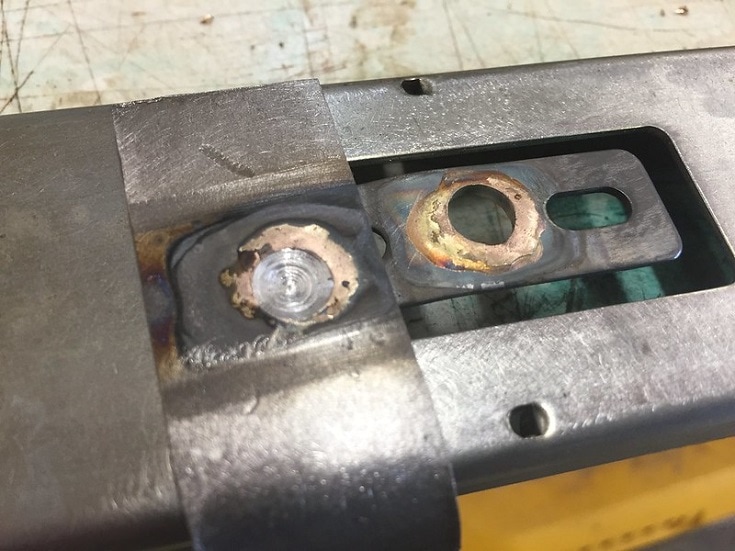
4. Clean the Metals
Clear off the metals from any impurities such as oils, grease, or dirt. The clearing is essential for capillary action to work properly. An impure surface prevents the formation of a proper and stronger bond and hinders capillary action.
5. Flux the Parts
Before brazing, always apply a coat or a flux to the joint area to prevent oxidation. Oxidation also prevents the formation of a proper and strong bond.
6. Assemble the Parts for Brazing
Assembling all the parts you require for brazing will enhance the capillary action. During assembling, welders can use weights and clamps to align the parts to be brazed. You can also use materials such as stainless steel, ceramics, or Inconel to prevent massive heat loss on the joints.
7. Braze the Parts
Begin the brazing process by heating the base metals first. The filler metals will be heated automatically once they come into contact with the heated base metals. For the process to work efficiently, the filler metal’s melting point should be above 450˚C but lower than that of the heated base metals.
8. Clean the Brazed Joint
The final brazed assembly cleaning process is conducted in a two-step procedure:
- Extracting any flux residue by immersing the assembly in hot water after the filler metal has completely solidified.
- The second step is called picking. It involves the extraction of the remaining oxides that lack flux. Alternatively, you can polish the assembly with a fine emery cloth to get a spotless finish.
The Common Types of Brazing
There are several types of braze welding techniques for different kinds of materials.
1. Furnace Brazing
Furnace brazing is a semi-automatic process widely preferred for industrial applications since it requires minimally skilled labor.
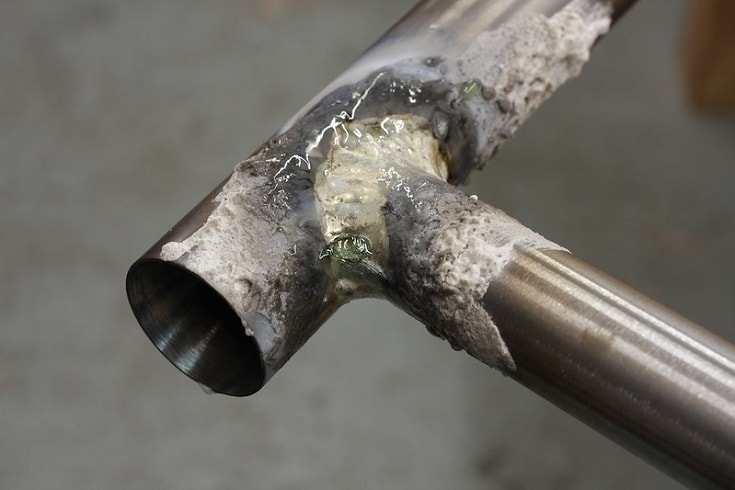
This technique is further broken down into the following types.
- Batch Type Furnaces – They have low equipment costs, and welders use them to heat each part separately. The furnace can also be turned off when not in use to cut down on operating costs. Batch type is efficient for medium to large volume productions. The method also offers a great degree of flexibility on the specific parts to be brazed. During welding, oxidation and cleaning of the assembly can be done by fluxing.
- Continuous Type Furnaces – They are used for a steady flow of similar parts. Continuous furnaces are often used with conveyors that carry materials through the hot zones at a controlled speed. You can control the levels of oxidation and cleanliness using flux.
- Retort Type Furnaces – These are furnaces containing a sealed lining known as a retort which creates the desired atmosphere for brazing. These furnaces are heated using conventional heating methods for efficient brazing. Retorts have a good heat-resisting mechanism making them the best option for semi-continuous versions or batches.
- Vacuum Type Furnaces – These furnaces are economical since you can use them to braze materials with stable oxides that can’t be brazed in furnaces with open atmospheres. Vacuum furnaces are also used with exotic alloy combinations and refractory materials that are unsuitable with atmospheric furnaces.
2. Drop Brazing
Welders use this method when brazing aluminum. The process is usually conducted in an air-tight zone to prevent oxidation. Before the process begins, the parts to be joined are fixed together, and a brazing compound is applied to their surfaces in a slurry form. The assembly is then dipped into molten salt baths, which acts as a flux and a medium of heat transfer. Drop brazing is widely used in the aerospace industry.
3. Silver Brazing
The technique, also known as hard soldering, uses a silver alloy as a filler material in the brazing process. Silver brazing is instrumental in fastening the hard metal tips on tools such as saw blades. This is done through a process known as pre-tinning. This process involves melting the braze alloy onto the hard metal tip and joining the assembly onto steel before remelting to fuse.
4. Cast Iron Brazing
Cast ironing uses filler rods made of nickel. Alternatively, you can use cast-iron rods, especially when brazing using conventional welding processes. Cast ironing is applicable in the electrical industry by using copper as a filler material to keep underground pipes warm in colder regions.
5. Vacuum Brazing
Since vacuum brazing does not use flux, the welded joints produced are clean, smooth, and strong. The process is also costly due to the complexities associated with welding inside a vacuum chamber vessel.
In vacuum welding, a welder can maintain the temperature at a constant rate. This is instrumental in mitigating problems such as residual stress due to slow heating and cooling. This results in improved chemical and mechanical properties of the workpieces. Vacuum brazing can also be used in the large-scale production of joints.
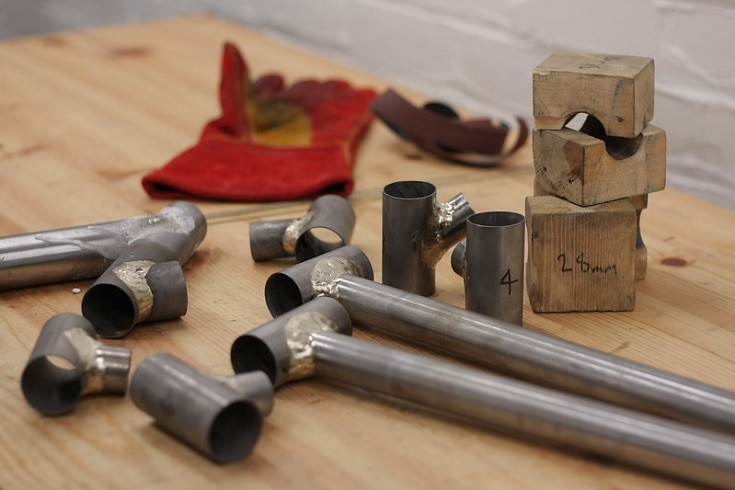
6. Torch Brazing
This type of brazing is used in specialized operations or small-scale production of joints. Brazing can be done using automatic, manual, or machine torches.
- Manual Torch Brazing – Brazing is conducted using heat from a gas flame placed near the brazing joint. The process also uses flux to reduce oxidation.
- Automatic Torch Brazing – The method employs an automated process except for loading and unloading welding materials. This reduces the operation cost, increases the production capacity, and improves the weld quality.
- Machine Torch Brazing – The method is instrumental, especially when a welder requires to repeat the brazing process. Machine brazing incorporates both automatic and machine torches to braze. The method also uses flux to mitigate oxidation.
Types of Brazing Joints
There are several braze joints to suit various parts, assembly geometries, and applications. The two main types include the butt joint and the lap joint.
- The Butt Joint – Forming a butt angle involves placing two pieces of metals with their edges facing each other before brazing. During brazing, the bond’s strength usually depends on the extent of the amount of bonding surface. You should ensure the butt joint formed is strong enough to meet most of the application’s needs. The setup for these joints is relatively simple and economical.
- The Lap Joint – Lap joints are used in applications that require stronger bonds. Their large bonding surfaces are a result of the overlapping metals. The lap joint’s overlapping nature is beneficial since it reduces the operation cost when positioning the parts for brazing with tubular parts. However, lap joints are unsuitable for applications with restricted spacing since they lack double thickness.
Applications of Braze Welding
- The process is used in the production of domestic and industrial cooling and heat exchangers. They include electrical coils, air conditioners, electrical appliances, evaporators, water heaters, condensers, and boilers.
- Production of domestic tools and hard metals. They include cutting tools, instruments used in mining, drilling or evacuation, guillotine knives, surgical scissors, saw blades, and leather die-cuts.
- Manufacturing lighting and light fixtures such as metal fittings for furnishings, brass musical instruments, chandeliers, and artistic objects in metal.
- Production of measuring and calibration instruments such as thermostats, pressure gauges, pressure switches, and hygrometers.
- Production of Electrochemical systems, power generators, transformers, armored heating elements, electrical contacts, relays, and breakers.
- Manufacture of silverware and jewelry. They include metal frames, zippers, handbags, fasteners, metallic buttons, and trinkets.
- Production of eyewear such as hinges for eyeglasses.

Factors to Consider When Choosing Brazing Filler Materials
1. Asses the Base Metals Being Joined
Every base filler metal is formulated for use with specific base metals or combinations of base metals. Here is a summary of the braze metals and their respective base metals.
- Copper-phosphorus (BCuP-X): They are primarily used for copper to copper joints with some minimal uses in silver, molybdenum, and tungsten. However, avoid using them on copper/nickel alloys that have more than 10% nickel.
- Aluminium-silicon (BAISi-X): They are used for fusing aluminum and aluminum alloys.
- Precious metals (BAu-X): They are used in brazing iron and cobalt and nickel base metals. They are also used in copper or stainless steel applications.
- Copper and copper-zinc: They are applicable in joining ferrous and non-ferrous metals. However, fillers with zinc are unsuitable for joining silver, bronze, stainless steel, and copper.
- Silver (Bag-X): Silver is the most preferred filler material for brazing most ferrous and non-ferrous metals except magnesium and aluminum alloys.
- Magnesium (BMg-X): They are applicable in joining magnesium-based alloys.
- Cobalt (BCo-X): They are used due to their high-temperature properties with cobalt base metals.
- Nickel (BNi-X): They are used due to their heat resistance and non-corrosive properties. They are widely preferred to braze stainless steel, cobalt-base alloys, carbon steel, copper, and nickel-based alloys.
2. Select the Appropriate Brazing Process
Each of the brazing techniques discussed in the above sections has a preferred application and limitation. Most welders prefer silver as the most versatile base material for any method except for dip brazing.
3. Determine the Ideal Brazing Temperature
The appropriate temperature for successful brazing is determined by the base metals being joined. When classifying the specific braze filler metals, alloying provides an accurate range of solidus and liquid temperatures.
4. Determine the Suitable Application of the Filler Metal to the Joint
There are several ways to introduce the braze filler between the base metals and the faying surfaces. These ways include pre-placing before heating the flow into the joint or manual face-to-face insertion after heating.
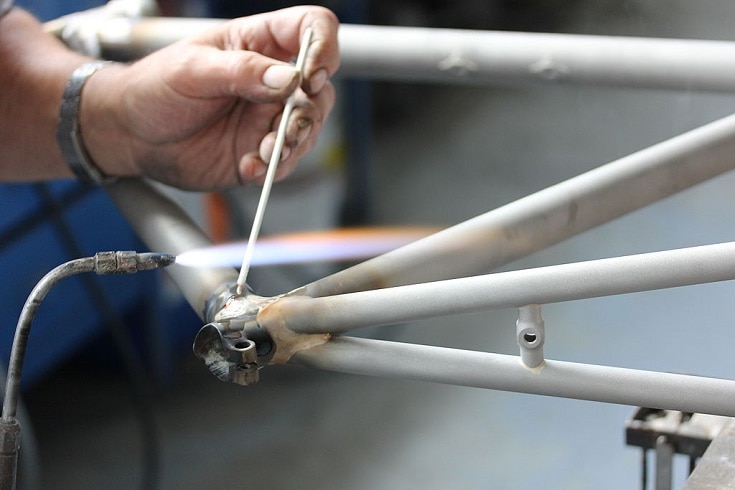
For this reason, the brazing process and joint design will determine the application of the filler material.
5. Check the Design of the Joint
The selection of a brazing process and base metal usage will guide you on the joint’s specific clearance and configuration. You should always use the correct clearances for all joints regarding their coefficients of thermal expansion of dissimilar metals. You should also check the machining details to prevent the formation of flux traps within the joint.
6. Consider the Form of Braze Filler Available
Braze filler materials are available in several forms, including powder, wire in coils, pre-formed forms, and rods for specific joints. Availability of a particular size and form varies from one classification to another and with the manufacture.
7. Environment and Service
Welders can use the brazing handbooks to understand the use of brazing filler materials in different environments and services. Once the condition is defined, evaluate the chosen braze filler metal classification to get the condition’s ideal chemical composition.
The Advantages of Using Braze Welding
- Welders can use the method to bond various metals, including dissimilar and non-metals such as metalized ceramics.
- The method is economical since it requires little or no finishing to get a clean joint.
- Component tolerances are maintained more accurately since brazing does not melt the base metal.
- The method is instrumental in making the joints resistant to corrosion.
- The low temperatures applicable in brazing preserve the metallurgical characteristics of materials.
- It is the preferred method for joining thin pipes.
- No arc or spark due to uniform heating. This minimizes thermal distortions.
- Automation of the brazing process is simple and straightforward during large-scale production.
The Disadvantages of Braze Welding
- Due to the low melting points of filler materials, the joints are not effective at higher temperatures.
- The joint’s color is usually different from that of the metal base creating an aesthetic disadvantage.
- The method is unsuitable for blazing large metal plates.
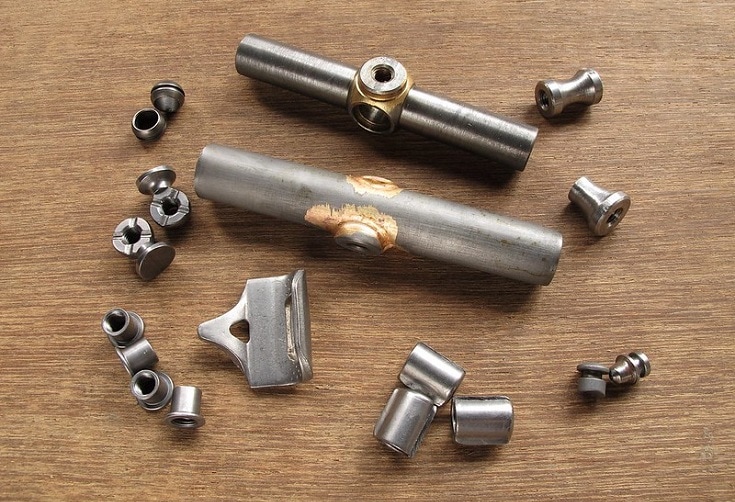
FAQs About Braze Welding
1. What is Flux?
Flux is a chemical compound that welders apply to shield the joint surfaces from atmospheric conditions that cause oxidation. Flux is instrumental in dissolving and absorbing oxides. As such, metals being fused require proper cleaning before brazing.
2. How is Flux Cleaned Off?
The most straightforward way to extract flux from a brazed joint is by quenching and soaking the assembly in hot water. For stubborn flux residue, add a few drops of hydrochloric acid or HCL to the water for effective cleaning. Alternatively, you can purchase special cleaning reagents from the local stores and use them for cleaning.
3. How Can You Reconstitute Flux?
Flux can be reconstituted by using water or water-based flux solution. You can also use deionized or distilled water to reconstitute flux.
4. How Do You Get Rid of Fumes?
Fumes can be eliminated using several methods. One common method is ventilating the working area by using exhaust hoods, fans, or respirators. Ensure all the base metals used are cleaned to remove surface contaminants that create fumes when brazing. You can also apply flux on the metal surfaces to prevent oxidation which produces fumes when heated. You can also heat the base metals broadly while focusing on the base metals and not on the filler material.
Conclusion
Since the process of braze welding involves exposure to heat and toxic fumes, ensure you dress up in protective attire before you begin working. This will protect you from unnecessary accidents and enable you to weld safely.
Featured Image Credit: Official U.S. Navy Page, Flickr
